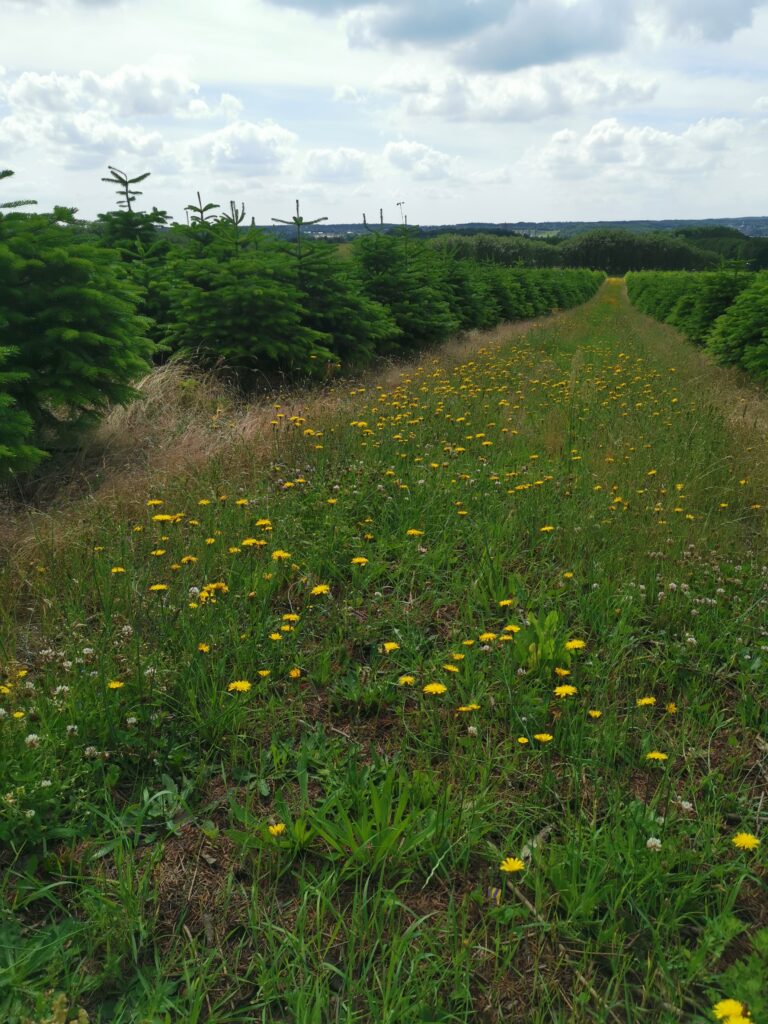
KORTEGAARD is aiming to have the lowest carbon footprint possible and our cut production is CO2 negative.
Real vs artificial trees
It is widely accepted that real Christmas trees are more ECO-friendly than artificial trees.
Artificial trees are made of plastic, in turn made from oil. A LCA carried out by the Danish Christmas Tree Association states that a plastic tree must be kept for up to 21 years to be as ECO-friendly as a natural nordmann fir Christmas tree and the Carbon Trust states that a 200 cm artificial tree has a carbon footprint which is:
- twice that of a real Christmas tree that ends up in landfill, and
- 10 times that of real Christmas trees that are burnt or chipped and spread in the garden
Storing CO2
Real Christmas trees capture and store CO2 as they grow and release oxygen. In an approx. 9-year life cycle, a nordmann fir Christmas tree stores up to 16 kg of CO2 from the atmosphere.
On a Christmas tree farm, this works out at approx. 10 tons of CO2 per hectare per year, which is up to twice as much as traditional deciduous forests. The reason for the high CO2 capture rate by Christmas trees is that they are grown close together as an agricultural crop. Each tree has several generations of needles – every year when a Christmas tree grows, a new generation of needles is added to the tree increasing the tree’s CO2 capture.
Fertilised Christmas trees are generally healthier and grow faster than non-fertilised trees. The speed of the growth of fertilised Christmas trees is believed to increase the CO2 capture to approx. double that of non-fertilised trees.
KORTEGAARD Christmas trees
Our trees are grown on Christmas tree farms, where a cut tree is replaced with at least one new tree, in a cyclical agricultural process. There is no net loss of forest or woodland in our production.
We have approx. 20% of headlands and tracks in and around our fields to encourage natural wildlife, and most of our fields are surrounded by forest or natural space.
We aim to only use organic fertilisers and as many mechanical processes as possible to keep our Christmas trees as ECO-friendly as possible.
Christmas tree plantations are a great habitat for wildlife as documented in BCTGA’s Biodiversity Study. Below a list of wildlife present in and around our Christmas tree fields:
- Partridges
- Pheasants
- Foxes
- Bees
- Wasps
- Deer
- Butterflies
- Ladybirds
- Variety of insects
Transport
We deliver directly from our Christmas tree farms minimising travel distance and transit time, always ensuring our customers excellent fresh, ECO-friendly Christmas trees.
Chipping & composting
Chipping and composting is the best method of disposing of a Christmas tree. It means that a Christmas tree serves another useful purpose in parks and gardens, and has negligible or even negative CO2 emissions. According to the Danish Christmas Tree Association, a nordmann fir Christmas tree has a negative impact of approx. 0.6 kg of CO2. Most charities collect used Christmas trees for recycling against a small donation. Get a list of charities offering this service from your local garden centre and please support.
Living wage
All employees are paid a living wage.
